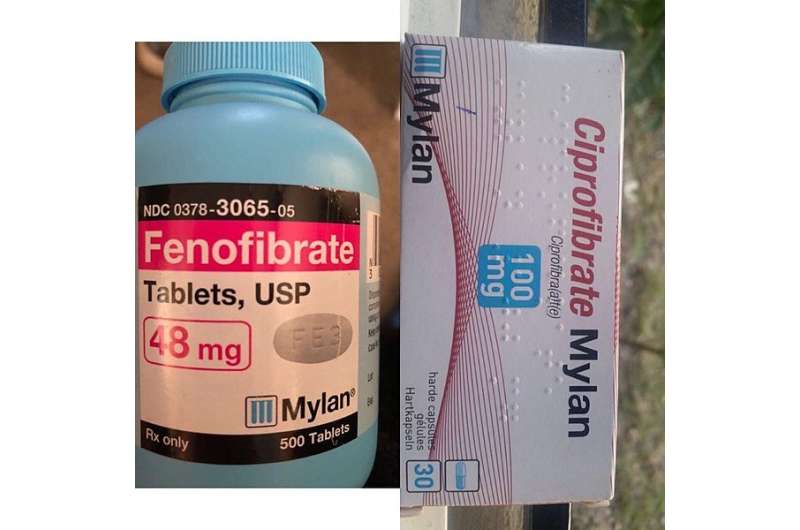April 27, 2022 report
Multicenter cohort study shows reduced risk of vision-threatening diabetic retinopathy from fenofibrate

A team of researchers at the University of Pennsylvania has found that administration of a drug currently used to reduce cholesterol levels in the bloodstream can reduce the risk of developing proliferative diabetic retinopathy (PDR) from non-proliferative diabetic retinopathy (NPDR). In their paper published in JAMA Ophthalmology, the group describes their cohort study involving 5,835 patients who were taking fenofibrate and 144,417 others who were not, and what they learned about its efficacy in preventing diabetic macular edema (DME), PDR and vision-threatening diabetic retinopathy (VTDR). Robert Frank, with the Wayne State University School of Medicine, has published an Invited Commentary piece in the same journal issue describing the work by the team in Pennsylvania.
Prior research has suggested that diabetic patients who take the cholesterol drug fenofibrate were less likely to develop PDR or VTDR, but the data was nonspecific. To date, two clinical trials have been conducted to test the use of fenofibrate in diabetic patients. One of them, the ACCORD-Eye trial, showed less progression severity, but did not focus on PDR or DME. And the FIELD study showed that patients using fenofibrate were less likely to receive laser eye treatment for PDR or DME, but it did not involve levels of progression.
In this new effort, the researchers accessed data in the Medicare Advantage database that involved the period 2002 to 2019. Included in the database was information about patient diabetes and eye status and whether they had been given fenofibrate. In all, the researchers included 150,252 NPDR patients (all over age 18) in their analysis—5,835 of whom were taking fenofibrate and 144,417 who were not. They found that 27,325 patients progressed to VTDR, which included 4,086 patients to PDR and 22,750 who progressed to DME. They also found that use of fenofibrate resulted in an 8% reduced risk of progression to VTDR and a 24% reduction in progression to PDR. They saw no reduction in progression to DME. The researchers suggest that the use of fenofibrate can provide a modest reduction in progression of NPDR patients to PDR and VTDR, which indicates some degree of protection against the breakdown of the blood-retinal barrier.
More information: Elana Meer et al, Association of Fenofibrate Use and the Risk of Progression to Vision-Threatening Diabetic Retinopathy, JAMA Ophthalmology (2022). DOI: 10.1001/jamaophthalmol.2022.0633
Robert N. Frank, Use of Fenofibrate in the Management of Diabetic Retinopathy—Large Population Analyses, JAMA Ophthalmology (2022). DOI: 10.1001/jamaophthalmol.2022.0634
© 2022 Science X Network



















